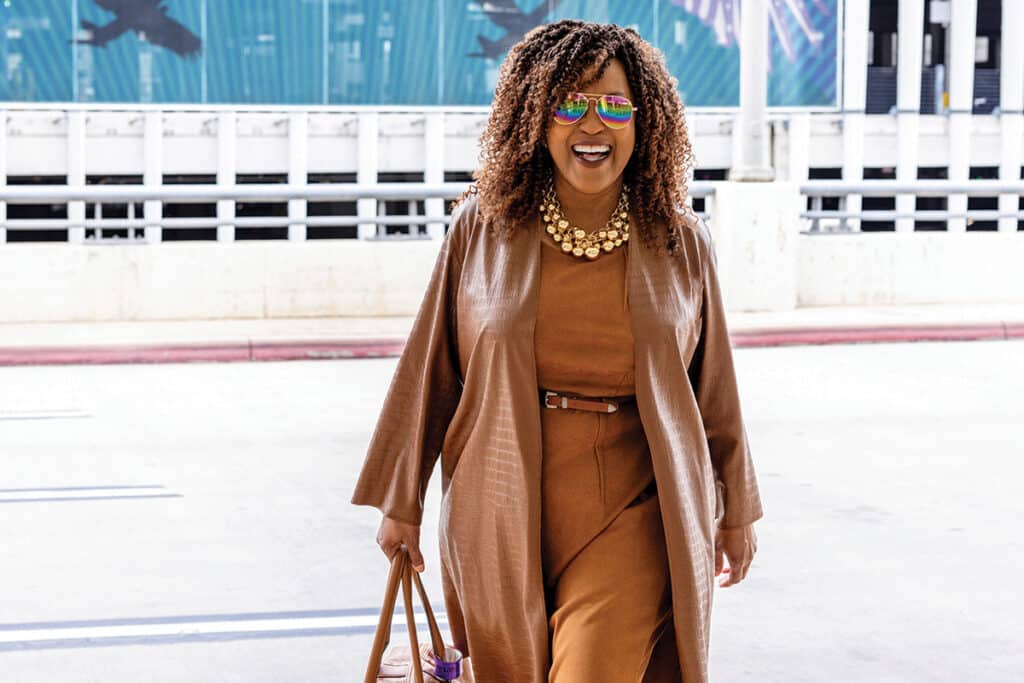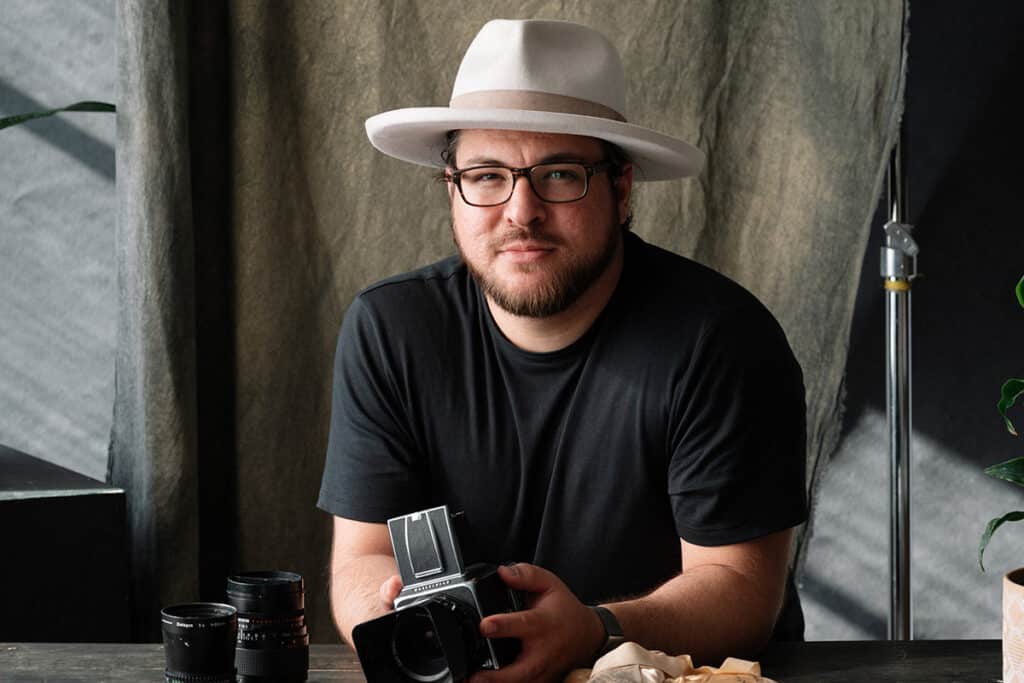There are no mean girls in this gymnastics class, no queen bees or wannabes. Most are around 9 years old, wearing blue velveteen leotards. As the six girls work through stretching exercises to prepare them for floor routines, they encourage each other.
“Good job!” says a French-braided blonde to a girl with long, wavy chestnut hair, who has just accomplished a cartwheel ending in the classic, arms-up gymnastics salute. “Thank you,” says her friend, flashing a smile. “You were good, too.”
Their teacher, Amy Cardwell, sets the example. “Thank you for trying,” she says later, as one of the girls struggles to find the right position to lean over a set of uneven bars in an equipment area of Aerial Athletics, a sunny gym in northeast San Antonio. The move is called a “front support,” the first step toward a flip around the bar.
As Cardwell moves around groups of girls at different stations, she catches a strawberry-blond sprite about to try a spin without a spotter present. “No flipping,” the teacher cautions. “We’ll get there, though,” she adds with a smile.
Cardwell’s charges respond to her warm, gentle teaching style. As she makes her way across the floor, she’s apt to find one on each side, holding her hands and talking to her excitedly. But she doesn’t hesitate to push the girls toward their personal best, as they tackle new skills on the floor or at the equipment. “Yea! Try it again,” she urges a student completing a tentative vault. “Uh-oh,” she says to another student who seems a bit distracted. “That was a wimpy try. You can do it.”
After a giggly session of leaping or lowering themselves carefully into a pit filled with tossable foam blocks, the class ends with a round of high-fives and hugs, as girls who have become best friends through gymnastics part until next week, bouncing off to their parents, watching with pride from a waiting area.
Though most of the girls have been in Cardwell’s classes for about two years, they are still working on basic elements of their sport. All have developmental delays, from Down Syndrome or other conditions. Cardwell, who also coaches gymnasts for the Special Olympics, has been coaching special-needs children for five years. “Working with them has given me a whole new perspective,” she says. “I was ready for this change.”
A kindergarten teacher at Thousand Oaks Elementary School, Cardwell has been coaching gymnastics for 12 years. While growing up in Corpus Christi — “I came here to go to UTSA and never left,” she says — she was a competitive gymnast, “but I like coaching better.” As many in the sport view it, gymnastics is about “the pursuit of perfection in what you can accomplish.” Her current students’ goals, however, may be more complicated.
“My main goal is to help these kids develop physically, mentally and socially,” Cardwell says. As a teacher in the public-school system, she had observed that mainstream physical-education classes geared to the abilities of typically developing children could leave special-needs children behind. “Most schools don’t offer adaptive PE,” she says. “For so many kids, the pace can be overwhelming. They feel different, left out.”
When the parent of a child with cerebral palsy asked if Cardwell could work one-on-one with her child, she agreed, and soon welcomed another special-needs child into what became her first special-needs gymnastics class. As a student at the University of Texas, Cardwell had started out studying to be an occupational therapist, but switched to an education major because she enjoyed working with children. Through coaching special-needs gymnastics, she combines both interests.
“To my knowledge, there was nothing else like it in San Antonio,” she says. She called her program AB Gymnastics, with the initials standing for “Above and Beyond.” The name has dual significance. “For the kids, it means challenging themselves to go above and beyond what anybody might expect of them,” she says. “For myself, it means to go beyond the basic level and impact people’s lives with this program.”
Thanks to word-of-mouth, AB Gymnastics has expanded to do just that. The program now includes several classes as well as some individual instruction for children ages 3 through 20. Cardwell teaches boys as well as girls — “You need to keep coming up with new things to hold the boys’ attention,” she says, smiling. The children have a range of conditions from Down Syndrome, cerebral palsy and autism to varying degrees of mental retardation from other medical issues. One student has Cordelia de Lange Syndrome, a rare condition that may cause developmental delays.
Cardwell, who is “midway through a master’s degree in special education at UTSA,” expands her own knowledge whenever a child with an unfamiliar condition joins her classes. “I’m willing to work with children with any kind of special issues, as long as they can function in a class setting,” she says. “The Internet makes it so easy to help me understand how to better help each child.”
She has found that most special-needs children can master gymnastics skills if allowed to work at their own pace, geared to their developmental stage. “It takes children with delays longer to develop skills,” says Cardwell, “That’s why we break them down into a series of small steps, with plenty of repetition before you move on to add the next one.”
Not long after she started working with special-needs children, Cardwell was invited to coach gymnasts for the Special Olympics, the international program that allows young athletes with special needs to compete at an elite level. The organization’s gymnastics competitions “look pretty much like any other (gymnastics) events,” says Cardwell. There are judges who assign point values to each skill demonstrated and a sequence of levels from beginning to advanced. “The only way you can tell the difference,” she says, “is that instead of everyone keeping perfectly quiet during the routines, there’s constant cheering.” Compared to the tense seriousness of other gymnastics, she says, “It’s so much fun!”
Cardwell has stepped up her involvement with Special Olympics. In 2003, she was regional head gymnastics coach of the U.S. team at the Special Olympics World Games in Ireland. She’s gymnastics coordinator and competition director for Special Olympics San Antonio, and served last summer as Texas coach for the first-ever Special Olympics National Games in Ames, Iowa.
While Cardwell was impressed at the overall quality of the gymnasts entered, she’s proudest of one of her own students. Jilliann Benitez, age 20, collected two gold medals, two silvers and a bronze, with first-place finishes in Floor Exercise and All-Around (an event requiring contestants to demonstrate a medley of skills), seconds in Balance Beam and Uneven Bars and a fourth in Vaulting.
Though Benitez and other students have done well at various Special Olympics events, the elite games are “not the main focus of my program,” says Cardwell. With or without the recognition of awards and cheering crowds, special-needs children can benefit from gymnastics. “While gaining physical skills,” Cardwell says, “they become successful mentally, since a lot of thinking goes into learning a new gymnastics skill successfully.” They also gain socially, meeting new friends in a new environment.
During the class that just finished, a group of younger, typically developing girls briefly shared the floor with the AB Gymnastics girls. “My girls see (the other girls) doing the same thing they’re doing, and they see my kids. That has to be good for both (groups),” she comments.
During the school year, Cardwell teaches full time by day and teaches or coaches gymnastics two or three nights a week. Her schedule can be hectic, but not depressing.
“People often ask me, “Amy, isn’t it so sad?’ when they hear I work with special-needs children,” she says. “But it’s really the opposite. The work I do here reminds me of the blessings I have and teaches me that everybody can succeed at what they try to do.”
Author: Paula Allen
Photographer: Janet Rogers




